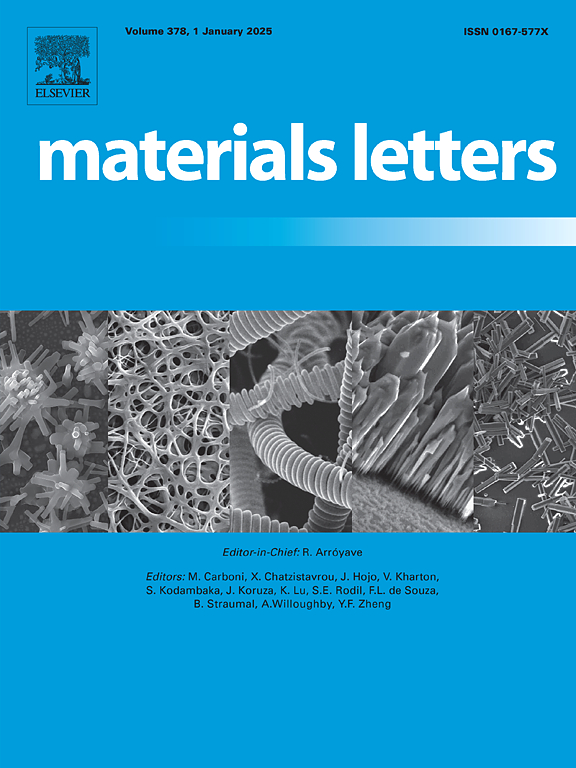Exploring popped-out phenomena in large-scale silicon ingot growth
IF 2.7
4区 材料科学
Q3 MATERIALS SCIENCE, MULTIDISCIPLINARY
引用次数: 0
Abstract
Silicon wafers are essential for the semiconductor industry, providing the foundation for most integrated circuits. As demand for microelectronics grows, larger silicon wafers, have become crucial for increasing chip production and reducing manufacturing costs. However, the crystal separation phase during Czochralski (CZ) ingot growth is particularly challenging for larger ingots, often resulting in defects due to premature detachment (“popped-out” tails). This study investigates the popping-out stage of 18-inch ingots under varying heater power and ingot pull-out speed conditions. Photoluminescence (PL) imaging and a convolutional neural network (CNN) were used to analyze dislocation density in the silicon wafers. Results show that increasing the pull-out speed after detachment can significantly increase dislocation density, while pausing the ingot near the melt surface minimizes dislocations. Additionally, increasing heater power after detachment reduces dislocation density. The optimal condition for minimizing dislocation was found when heater power was doubled, and the ingot was paused near the melt surface for 30 min.
探索大规模硅锭生长过程中的爆裂现象
硅晶片是半导体工业的基本材料,是大多数集成电路的基础。随着微电子需求的增长,更大的硅晶圆已成为提高芯片产量和降低制造成本的关键。然而,对于较大的硅锭来说,Czochralski(CZ)硅锭生长过程中的晶体分离阶段尤其具有挑战性,往往会因过早脱离("弹出 "尾部)而导致缺陷。本研究调查了在不同加热器功率和钢锭拉出速度条件下 18 英寸钢锭的 "弹出 "阶段。光致发光 (PL) 成像和卷积神经网络 (CNN) 被用来分析硅晶片中的位错密度。结果表明,提高脱离后的拉出速度可显著增加位错密度,而在熔体表面附近暂停铸锭可最大限度地减少位错。此外,在脱离后增加加热器功率可降低位错密度。当加热器功率增加一倍,钢锭在熔体表面附近停顿 30 分钟时,就能找到使位错最小化的最佳条件。
本文章由计算机程序翻译,如有差异,请以英文原文为准。
求助全文
约1分钟内获得全文
求助全文
来源期刊

Materials Letters
工程技术-材料科学:综合
CiteScore
5.60
自引率
3.30%
发文量
1948
审稿时长
50 days
期刊介绍:
Materials Letters has an open access mirror journal Materials Letters: X, sharing the same aims and scope, editorial team, submission system and rigorous peer review.
Materials Letters is dedicated to publishing novel, cutting edge reports of broad interest to the materials community. The journal provides a forum for materials scientists and engineers, physicists, and chemists to rapidly communicate on the most important topics in the field of materials.
Contributions include, but are not limited to, a variety of topics such as:
• Materials - Metals and alloys, amorphous solids, ceramics, composites, polymers, semiconductors
• Applications - Structural, opto-electronic, magnetic, medical, MEMS, sensors, smart
• Characterization - Analytical, microscopy, scanning probes, nanoscopic, optical, electrical, magnetic, acoustic, spectroscopic, diffraction
• Novel Materials - Micro and nanostructures (nanowires, nanotubes, nanoparticles), nanocomposites, thin films, superlattices, quantum dots.
• Processing - Crystal growth, thin film processing, sol-gel processing, mechanical processing, assembly, nanocrystalline processing.
• Properties - Mechanical, magnetic, optical, electrical, ferroelectric, thermal, interfacial, transport, thermodynamic
• Synthesis - Quenching, solid state, solidification, solution synthesis, vapor deposition, high pressure, explosive
 求助内容:
求助内容: 应助结果提醒方式:
应助结果提醒方式:


